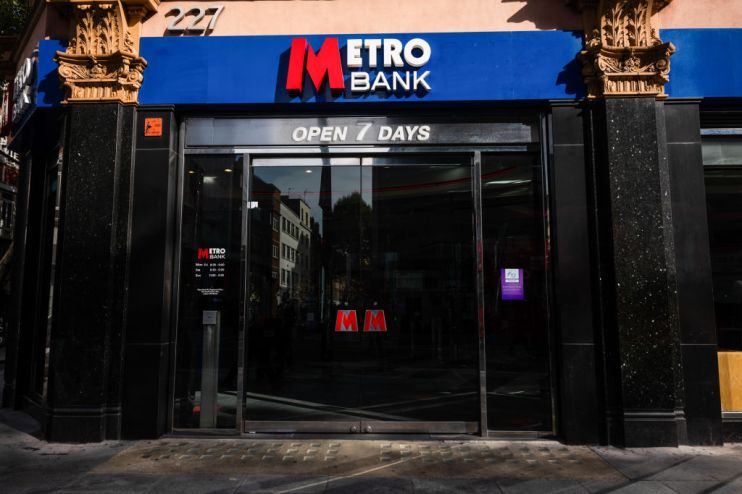Metro Bank swings to first annual profit since 2018 while slashing 1,000 jobs

Metro Bank has swung to its first annual profit since 2018 after the branch-focused lender was rescued from potential collapse by a major refinancing package last October and embarked on a restructuring set to involve some 1,000 job cuts.
The firm posted a statutory profit before tax of £30.5m in 2023, compared with a £70.7m loss in 2022. Its underlying loss reduced by 67 per cent year-on-year to £16.9m.
Metro Bank took a £20.2m one-off charge tied to its cost reduction efforts, which it said was expected to deliver a further £30m of annualised cost savings by the end of 2024 – on top of £50m already planned.
Higher interest rates boosted high street banks’ profits last year, but the outlook for the sector has been deteriorating over the past few months as lenders have started competing aggressively for business by lowering borrowing costs and boosting saving rates.
Metro Bank’s net interest margin – reflecting the difference between what it charges on loans and pays to savers – narrowed in the second half of the year to 1.85 per cent from 2.14 per cent in the first half.
Its underlying revenue grew five per cent year-on-year, which the bank said reflected “effective asset rotation and increased yields plus 12 per cent growth in capital efficient fee income”.
The bank’s profit should come as a relief after what has been a tough few years. Metro Bank ran into problems in early 2019 when, after admitting in January that it had misclassified some loans, it revealed it did not have enough capital to meet regulatory requirements.
The accounting errors forced Metro Bank to raise £375m in extra cash from investors and eventually led to a total of £15.4m in regulatory fines. Shares in the lender plunged after the scandal was publicised and the stock has not recovered, down 98 per cent since January 2019.
After the Bank of England last September did not approve Metro Bank’s request to use its own models to assess risks on its mortgages and assets, the lender was rescued by Jaime Gilinski Bacal. The Colombian billionaire’s firm, Spaldy Investments, took a controlling stake of around 53 per cent after leading a £925m refinancing package.
As part of restructuring efforts following the rescue, Metro Bank said its headcount would be cut by around 1,000 – 22 per cent – by the middle of April.
Other cost-saving measures include automating some processes, reducing opening times at branches and simplifying its business model.
Despite experiencing the perils of a costly branch-based business model, the bank has said it wants to open new “stores” in the north of England, albeit smaller than previously envisioned and mainly supporting Metro Bank’s SME offering in out-of-town locations.
Metro Bank’s current network of 76 branches is a far cry from the 200 branches by 2020 that it planned in 2013.
Chief executive Daniel Frumkin said on Wednesday: “We were pleased to return to profit on a statutory basis and deliver our best half-year results for several years. After addressing our capital position in Q4, we also launched a successful deposit campaign, with deposits totalling £16.5bn as at the end of February 2024.
“During the year we also launched a cost saving plan which included reducing store hours and roles across the organisation. These efforts will ensure the bank is right-sized for the future, with a strong focus on both digital and great customer service.
“Looking forward, I remain confident in our ability to be the number one community bank. The work we have undertaken this year has laid the path to become a structurally profitable business and our focus towards the SME, Commercial and specialist mortgages sector presents an exciting opportunity in an underserved area of the market.”
Benjamin Toms, an analyst at RBC Capital Markets, said in a note: “We believe there is a long road ahead and execution will be key, but the refinancing package has bought management time to reshape the bank.
“Given recent announcements around consolidation in the space, we are interested to hear management’s views on the potential for inorganic growth once the current phase of cost-cutting ends.”